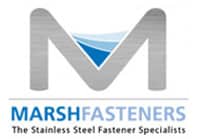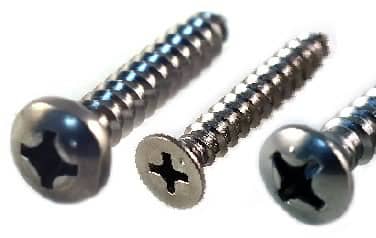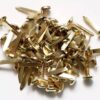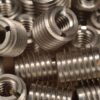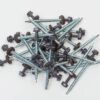Last Updated on May 11, 2021 by Marsh Fasteners
A screw is never just a screw. There are, in fact, several different types of screws, each specially designed for a particular job and for use on specific materials. Most types of stainless steel screws are very easy to tell apart, as their shapes, lengths, heads, threads and points (or lack thereof) give them away. There are, however, two particular types of screws that are not so easy to tell apart: sheet metal screws and wood screws.
Just a thread apart
Obviously the main difference is that one is used for wood and the other is used for sheet metal, but how are they designed for these differing purposes? At first glance, they do look very similar and they both come in the same variety of heads, ranging from flat to round or oval, with Philips, straight or square driver slots. So how do you spot the difference?
The visible difference is in the thread. Woods screws have a wider-spaced, medium-depth screw. Some wood screws – longer ones – often have a threadless shank at the top of them. Sheet metal screws, on the other hand, always have a tighter, sharper thread that cover their entire length.
These screws are not really interchangeable. In a bind, if you’re short of the right available screws, you can use a sheet metal screw on wood. However, the opposite is not the case. Wood screws are unlikely to form a tight enough joint when used on sheet metal – especially if they have a threadless shank.
Metal screws vs. wood screws for DIY projects
While they are alike in function and utility, wood and metal screws feature different properties that distinguish them for their specific roles.
Uses of metal screws
Metal screws differ from wood screws in their design and specific function, featuring design elements geared toward fastening metal-based materials and hard plastics. These are self-tapping screws typically used to secure sheet metal to metal, plastic, fiberglass, wood, or other materials.
Few metal materials are pre-drilled with holes, so it is sometimes necessary to use screws that can create their own pilot holes for maximum efficiency. Self-tapping metal fasteners can pierce thin metals with ease by cutting their own threads and provide a firm hold. Metal screws are designed to withstand the stress of holding together heavy metal pieces for an extended period.
A metal screw is fully threaded to maximize grip and fully secure the two connecting pieces. You can use metal screws any time you are connecting any material to a metal base, be it plastic, fiberglass, or wood, as these are the most versatile screws. They can also be used to attach hinges, hasps, brackets, and other types of hardware.
Uses of wood screws
Wood screws are similar to metal screws in some ways, but their differences allow them to serve a specific purpose. As the name would suggest, wood screws are best for fastening materials like plywood, lumber, or other types of wood. A few key design features make wood screws ideal when working with these softer materials, but they can also be used to attach hardware to wood as long as a pilot hole is drilled to accommodate the unthreaded portion of the screw.
As wood fasteners go, they are excellent for use in many different applications as they are designed for flexibility. Wood screws have a sharp point that can dig into wood, making them highly useful for woodworking applications. Most wood screws are only partially threaded, which allows you to connect two pieces of wood more securely with minimal damage to the attached wooden piece. Wood screws are few and far apart to minimize damage and prevent cracking. However, these screws are explicitly used for attaching materials to wood; they might not have enough tensile strength for particularly cumbersome loads.
In short, if you are attempting to attach sheet metal, you should choose metal screws. They are easier to drive into metal and will offer a greater level of strength and security. On the other hand, wood screws are better suited for applications involving plywood, lumber, and other wood materials. Metal screws are ideal for self-tapping, whereas, in wooden screws, self-tapping is not possible. These fasteners are typically used in outdoor building structures such as decks and fences.
The simple answer is always to ask for the right types of screw for the job you are doing. If you are unable to visually tell the difference between wood and metal screws, your hardware dealer or fastener supplier will be able to tell you. For the best quality stainless steel screws of any variety, pay a visit to Marsh Fasteners.
